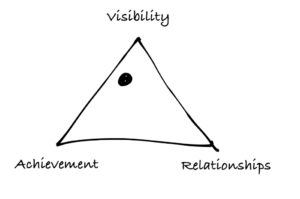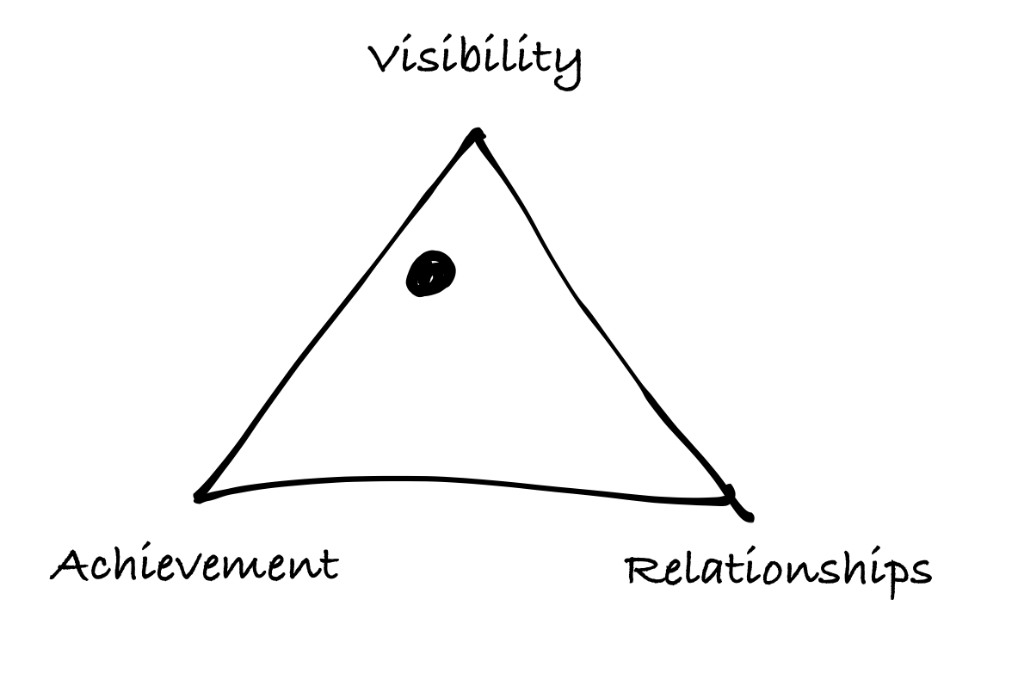Why do people come to work, and why could knowing that help your team perform?
A decent third of the 6-week introductory programme for Upstream graduates in Shell that I was privileged to be a director of in 1994-1997 was on leadership tools. Thinking back on that course one of the models that I’ve talked about most with new leaders was a very simple one on motivation.
Why do people come to work? There’s a lot of research on this, but as a new leader, this simple triangular model is surprisingly useful:

The model suggests that everyone has some combination of three major elements of motivation:
- Visibility – the desire to be seen by colleagues and (senior) management
- Achievement – the self-satisfaction that comes from delivery of work targets
- Relationships – the pleasure of being with friends & colleagues in the work environment
Being cognisant in discussions with staff of which might play a role for any individual, and indeed openly discussing these, can help with motivating people. For instance, a strong visibility drive might make an individual a great candidate for leading the presentation to the visiting Vice President, while someone low on that axis might really not want to be asked (though I’d argue that’s always worth a discussion, in development terms). Similarly someone with a relationship drive might be really keen to lead the organisation of the social elements of the next away day. Achievement driven folks might react well to open recognition of significant delivery elements in team meetings or in front of management.
It’ll be rare to find someone who is so dominant in one corner of the triangle that the others don’t matter – we’re all complex human beings – but having in mind a rough idea of where someone might sit in the triangle, and how this varies across members of a team, can certainly help managers develop a happy work environment by better meeting the motivational needs of the individual members.
Key Message: An awareness, even in simple terms, of why people come to work, can help you utilise team members in a way that motivates them, and to design reward systems that supplement that. For any individual, consciously think about, and even discuss, what the balance is of visibility, achievement and relationship drivers.
What’s your experience of these motivation elements at work? How does this change with the increased prevalence of remote working today? I’d love to hear your thoughts….

